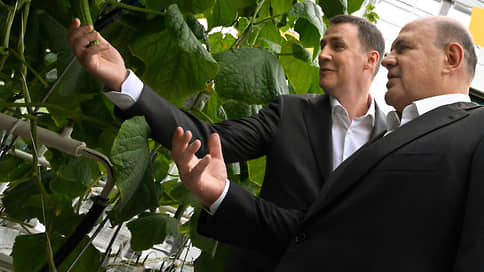Export of our hope
[ad_1]

Yesterday, at a government meeting, Prime Minister Mikhail Mishustin approved an increase in the maximum size of grants for the agro-industrial complex, demanding not to reduce the number of their recipients – for this, the volume of the program to support farming and cooperation was increased for 2023 from 12 billion to 14 billion rubles. Given the overstocking of the grain market, the increase in state support probably indicates not only the desire of the White House to maintain liquidity in the agricultural sector at the beginning of the sowing season, but also the confidence that the products will be able to be exported. Optimistic estimates of exports are confirmed by the latest industry report of Roscongress – according to them, Russian grain is already adapting to changes in the world market.
The government continues to expand state support for the agro-industrial complex: the amount of the Agrostartup grant has been increased to 8 million rubles. for livestock breeders working in agricultural cooperatives, up to 7 million rubles for those employed in dairy and beef cattle breeding, up to 6 million rubles for members of cooperatives growing crops, and up to 5 million rubles for farmers doing “other work”. Announcing new support measures, Mikhail Mishustin stressed that the increase in the size of grants should not lead to a reduction in the number of their recipients. Thus, the government is probably trying to stabilize the market at a time when the record harvest of 2022, with not very active exports, puts pressure on domestic prices, complicating the situation with the purchase of seeds, fertilizers and fuel (for more details, see Kommersant on February 7).
However, the growth of state support, apparently, also reflects the White House’s confidence that it will be possible to take significant volumes of grain out of the country. The official forecast of the Ministry of Agriculture for grain exports is 60 million tons by the end of the agricultural year (June 30, 2023). Caution in estimates (with a harvest of about 160 million tons and domestic consumption of no more than 80 million tons) is associated with difficulties in exports due to fear of secondary sanctions and their own limiting mechanism – the export quota. At the same time, it is precisely by increasing exports that the authorities expect to contain the problems caused by an excess of products on the domestic market in the conditions of the refusal of the Ministry of Agriculture to purchase grain from the market for the intervention fund. So far, Russian agricultural exporters have managed to return to normal indicators of external shipments of grain: in July-November 2022, 23.75 million tons of wheat were exported from the Russian Federation (against 21.9 million tons for the same period in 2021).
In part, hopes for record sales in the global market are based on the process of restructuring foreign markets for Russian grains, taking into account the changing situation in the world, recorded by the industry report of the Roscongress Foundation. According to the publication, although the traditional main buyers of Russian grain – Egypt, Turkey and Iran – are outside the jurisdiction of the US and the EU (that is, they are not afraid of secondary sanctions), their shares in Russian exports will change somewhat: with an increase in supplies to Egypt (from 2.7 million tons in 2021-2022 agricultural year to 3.1 million tons in 2022-2023), exports to Iran will significantly decrease (by almost 2 million tons). Saudi Arabia and Algeria are expected to be among the top five buyers of Russian wheat, “the West has no mechanisms for direct influence on them”: imports of wheat from the Russian Federation to them may increase two and eight times, respectively. Deliveries to Bangladesh, Sudan, and Israel, which are among the top 10 buyers of Russian grain, should increase by a multiple, and the total increase in shipments to the rest of the world will also grow by more than 1 million tons.
As recalled in Roscongress, for the whole of 2022, Russian wheat for export cost more than $300 per ton (about $30 more than in 2021). In 2023, due to the “good global harvest of key grains” expected by the World Bank and FAO, wheat prices may fall by 10% – to compensate for their fall with a decrease in export duties, Roscongress believes, it will also be possible to increase export volumes.
[ad_2]
Source link






